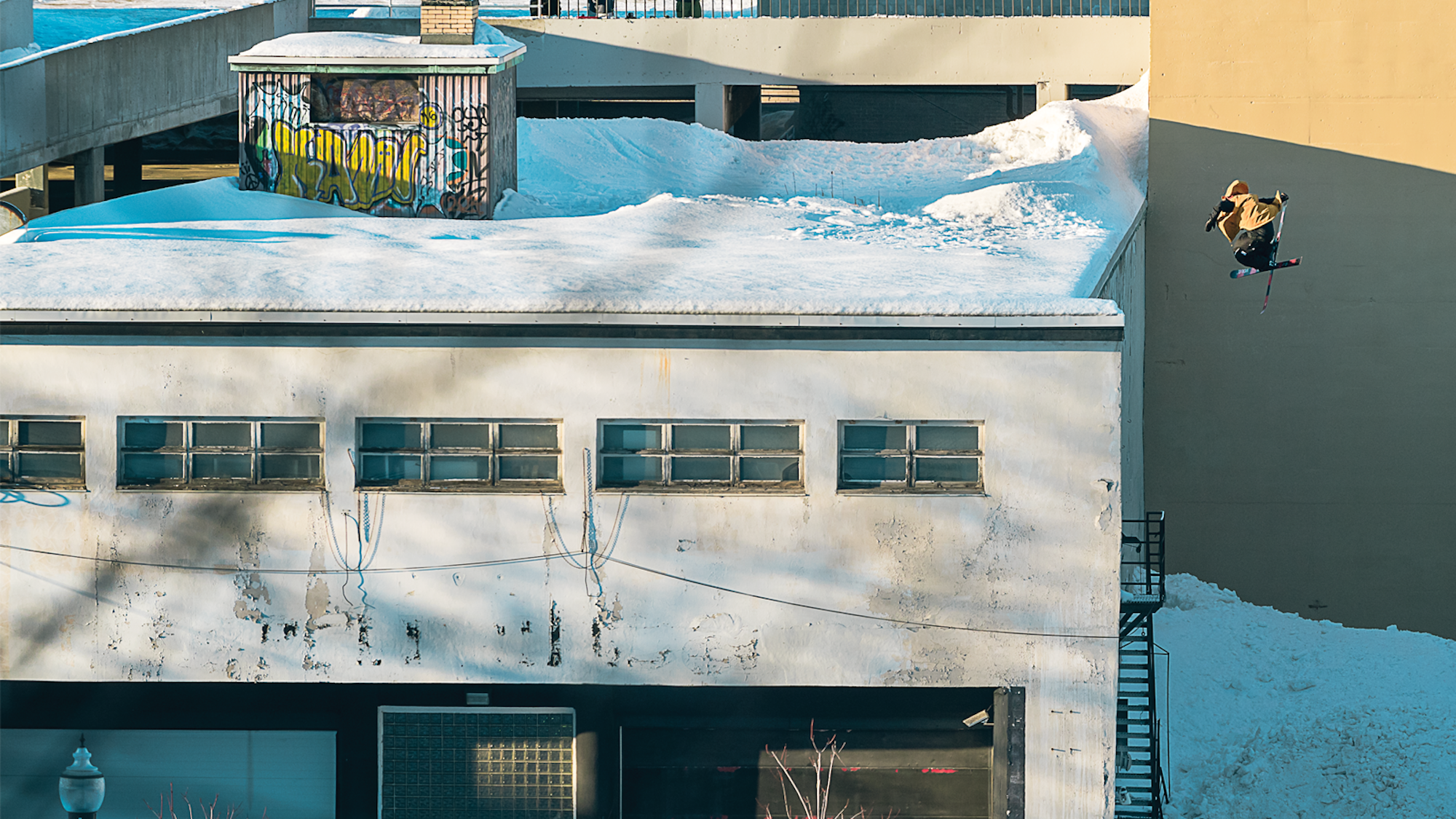WORDS — Tom Wallisch
Some of the most creative rail skiers in the world hail from Québec, Canada. You could even say that urban skiing was born and raised in the streets of Québec City and the small cities around it. The eastern edge of Canada doesn’t boast the largest mountains or best ski terrain in the country, but rail parks built on small ski hills and consistent snowfall make it a prime location for finding new hits and sessioning the classics.
The cities of Québec—Montreal, Québec City and Sherbrooke, to name a few—were built in another era, when steel was frequently employed and people walked most everywhere. The result was some of the best possible architecture for street skiing. Around almost every corner of these cities and small towns are handrails, stair sets, walls and other ironclad features.

[left]
SKIER: Emile Bergeron
PHOTO: Felix Rioux
[right]
SKIER: Phil Casabon
PHOTO: Felix Rioux


SKIER: JF Houle
PHOTO: Felix Rioux


SKIER: Henrik Harlaut
PHOTO: Brady Perron
Locales like the infamous “Red Ledge” at Québec City’s Montmorency Falls, are known throughout the ski world. Year-after-year, stunts performed at this go-to spot singlehandedly progress the sport and, though the crimson feature was recently given a fresh coat of grey paint, the ledge remains a standout from the pioneer days of urban riding. It has been showcased in Real Ski edits, segments by The Bunch and just about every Québec-based film production crew—and who knows what will happen there this coming winter.
Part of the allure of the Red Ledge and other features in the area is the knowledge of what’s been done before, and the opportunity to etch your own page into the books. Landing in Québec and finding these hits makes you feel closer to the legends of skiing’s past, but it’s not all about the rearview mirror. Ski and snowboard crews filming in Québec overturn a new stone each season. The allure of finding a brand new rail or urban feature to play on adds another level of intrigue, and the sub-zero temps and long, snowy winters allow ample time to search out and discover just the right place.
Most spots in Québec have similar history: Every season, whether it’s Houle, Casabon, Bergeron, Harlaut or one of the countless others, skiers are finding a new way to use these features. Unlike terrain parks, which change each winter, an urban spot almost always stays the same, it’s pull strengthens as video edits and photographs further cement it in the chronicles of skiing lore. Skiing Québec is a chance to feel closer to ski history, an opportunity to leave a personal mark on the sport.




![[GIVEAWAY] Win a Head-to-Toe Ski Setup from IFSA](https://www.datocms-assets.com/163516/1765920344-ifsa.jpg?w=200&h=200&fit=crop)

![[GIVEAWAY] Win a Legendary Ski Trip with Icelantic's Road to the Rocks](https://www.datocms-assets.com/163516/1765233064-r2r26_freeskier_leaderboard1.jpg?auto=format&w=400&h=300&fit=crop&crop=faces,entropy)





![[GIVEAWAY] Win a Head-to-Toe Ski Setup from IFSA](https://www.datocms-assets.com/163516/1765920344-ifsa.jpg?auto=format&w=400&h=300&fit=crop&crop=faces,entropy)

